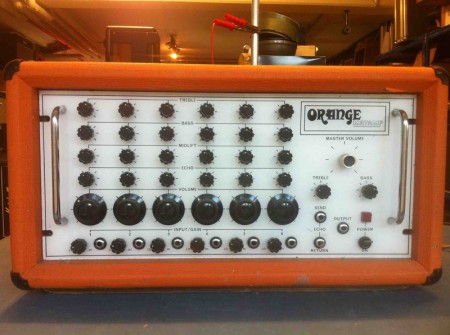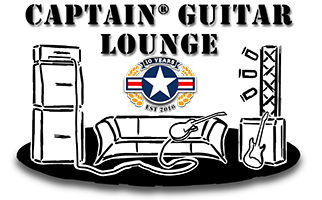I’m a big orange fan and I’ve been studying the subject.
Cliff Cooper opened the first Orange Shop on September 2, 1968, on New Compton Street in London’s West End.
He ran a recording studio, sold used equipment, and soon after, his own amplifiers and speakers.
Orange Amp history can be divided into 5 chapters:
1. the early years (1968 to 1971)
Production of the OR100 began in November 1968. Two 6550s or KT88s worked in the power amp and the chassis was aluminum, but it could not handle the load of the large transformers. Fewer than 50 amps were made, the first six touring the U.S. with Peter Green’s Fleetwood Mac.
The OR200 was produced from March 1969. Here worked four 6550 or KT88 power tubes and the chassis was already welded sheet steel and enameled in the familiar orange color. These amps were very loud and very clean. There was also a 6-channel PA version and a 200W slave power amp.
In the spring of 1969, the well-known OR100 and OR50 with EL34 in the power amplifier also came onto the market. Here, the front panels were still made of Traffolite, a three-layer plastic into which the lettering was milled down to the middle black layer.
The first Orange OA reverb units were also produced during this time, as well as various transistor amplifiers with up to 1000 watts!


2. graphics & text (1972 to 1978)
In February 1972, the famous Graphic Pics Only amps were introduced at the Frankfurt Music Fair. Here, the designations of the controls were graphically displayed on the Plexiglas front panel. Then, from 1973, a steel plate was printed with the symbols.
Then in 1974 the Pics & Text Amps appeared, again presented in Frankfurt. In addition to the pictures, there was also a text for the control elements.
The OR80 and OR120 named amps received some technical modifications, mainly in the phase rotator and the negative feedback of the power amplifier.
From 1975, various transistor amplifiers were launched under the name OMEC (Orange Music Electronic Company), including the OMEC Digital, the world’s first digitally programmable amplifier.
Then in 1976 my personal favorite Orange amplifier came on the market: the Orange Overdrive. A post-phase inverter master volume control makes the amps playable, because already theOR80 are roaring loud and distortion is otherwise unthinkable.
The serial number system at this time is very simple:
10xxx 1973
11xxx 1974
12xxx 1975
….
16xxx 1979


3. series two (1979 into the eighties)
In 1979, the look of Orange amplifiers changed. Besides the black front trim, other buttons were also used.
New were the Orange Hustler, a 1×12″ combo with 60 watts, which was also available as a 1×15″ bass combo, and the OR112M (guitar) and OR112SB (bass) tops.
4. first reissues (1993 to 1997)
In 1993, Cliff Cooper signed a licensing agreement with Gibson. Until 1997 the OR80 and OR120, as well as the overdrive amps were produced.
The reissue amps can be distinguished from the old ones by a few details:
The A and N from the Orange lettering is narrower on the RI amps, the sine above the F.A.C. switch starts at the top instead of the bottom, and small letters were started at the reverb and return and send. Also, the grips are different and greenback (or cream or blackback, depending on the year of manufacture) celestions were no longer used.
In collaboration with Noel Galagher, guitarist of the band Oasis, the Orange OTR, available with 80 or 120 watts, was born in 1997. No less than 18 changes were incorporated and created the signature sound on the `Be Here Now` album.


5. modern times (1998 until today)
Orange AD series amplifiers have been produced since 1998. Orange is still doing well, not least because they have recognized the signs of the times and adapted the Orange sound to modern needs.




